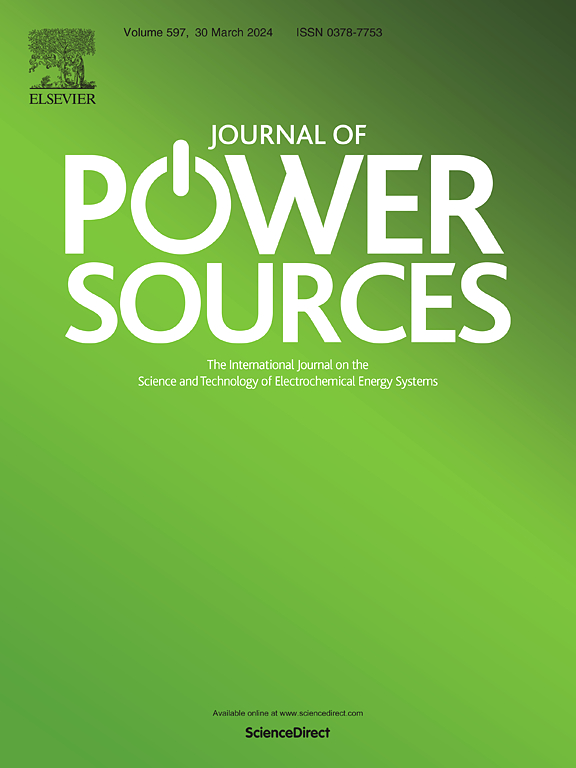Construction of interfacial layer on microporous layer for enhancing gas diffusion electrode performance
IF 8.1
2区 工程技术
Q1 CHEMISTRY, PHYSICAL
引用次数: 0
Abstract
Enhancing the performance of gas diffusion electrodes (GDEs) is essential for their widespread application in proton exchange membrane fuel cells (PEMFCs). A critical factor that restricts performance enhancement is the insufficient protonic conductivity within GDE-based membrane electrode assemblies (MEAs). This study endeavored to boost GDE performance by constructing an interfacial layer on the microporous layer (MPL). Following the construction of this layer, the reduced pore size in the interfacial layer better maintains the structural continuity of the catalyst layer, enhancing proton conduction efficiency within the catalyst layer, and increasing the contact area between the catalyst layer and the proton exchange membrane (PEM). These results indicate enhanced protonic conductivity within the catalyst layer and between the catalyst layer and the PEM. Notably, the cell voltage achieved with the interfacial layer-enhanced GDE can reach 0.580 V at 2 A cm−2, leading to a 10 % improvement over the original GDE. An investigation of the gas transport process revealed that increased protonic conductivity also reduced oxygen transport resistance within the catalyst layer. Furthermore, the composition of the interfacial layer significantly impacts fuel cell performance. Excessive ionomers tend to cause flooding in the catalyst layer, adversely affecting gas transport capability.

求助全文
约1分钟内获得全文
求助全文
来源期刊

Journal of Power Sources
工程技术-电化学
CiteScore
16.40
自引率
6.50%
发文量
1249
审稿时长
36 days
期刊介绍:
The Journal of Power Sources is a publication catering to researchers and technologists interested in various aspects of the science, technology, and applications of electrochemical power sources. It covers original research and reviews on primary and secondary batteries, fuel cells, supercapacitors, and photo-electrochemical cells.
Topics considered include the research, development and applications of nanomaterials and novel componentry for these devices. Examples of applications of these electrochemical power sources include:
• Portable electronics
• Electric and Hybrid Electric Vehicles
• Uninterruptible Power Supply (UPS) systems
• Storage of renewable energy
• Satellites and deep space probes
• Boats and ships, drones and aircrafts
• Wearable energy storage systems
 求助内容:
求助内容: 应助结果提醒方式:
应助结果提醒方式:


